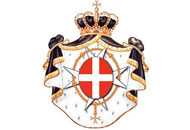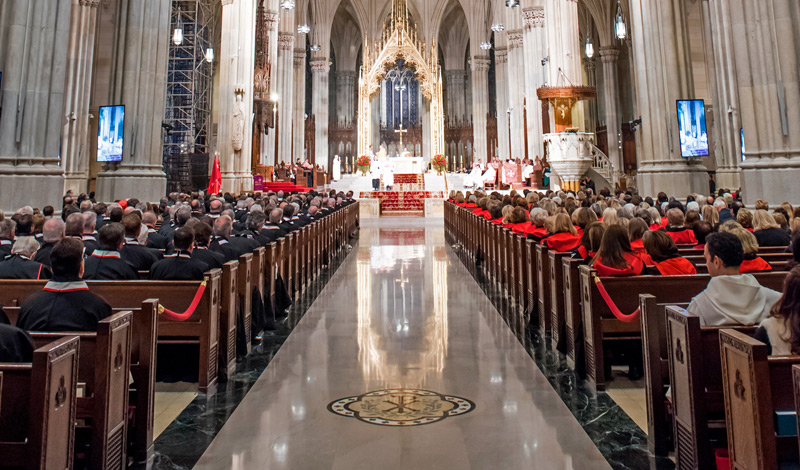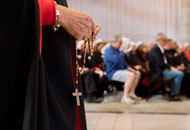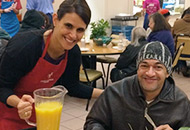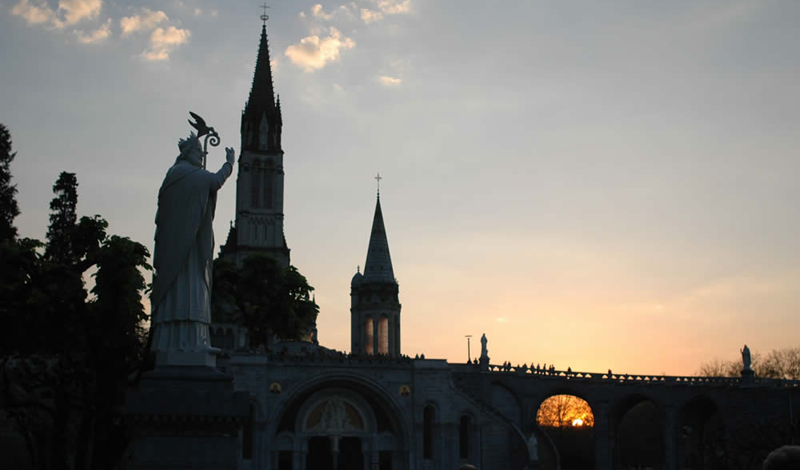Reflections and sharing of the experience on miraculous healing at Lourdes as Senior Physician at the Lourdes Medical Bureau. First of three articles by submitted by Roger R. Jean-Charles, MD, KM.
“The antinomy between faith and reason is so generally admitted that the coexistence of high
culture and faith in the same mind is disconcerting as a paradoxical anomaly”.
I, hereby, submit a series of three articles in the form of reflections on the dualism between faith and reason as a Knight of the Sovereign Military Order of Jerusalem and Malta (SMOM) and Delegate of the Order of Malta’s Tri-American Association to the International Medical Council of Lourdes (CMIL). I do so as a scientist and researcher who conducted research for NASA (National Aeronautic Space Agency) as a Harvard Fellow at Boston City Hospital in Boston, Massachusetts, the Mecca of Medicine. I currently serve as Professor of Medicine at the Faculty of Medicine and Pharmacy (FMP) and the Faculty of Odontology (FO) of the State University of Haiti (UEH) and Executive Director of the National Institute for Research on Salt and Health (INARSSAN), a research laboratory of the State University of Haiti (UEH) at the Faculty of Sciences (FDS) of the State University of Haiti (UEH).
The setting for these discussions is at the Lourdes Sanctuary with the illustration of three cases of healing deliberated at the assembly of the International Medical Council of Lourdes (CMIL). The Shrine of Lourdes is the usual site for the meetings of the members of the CMIL, although sometimes the meetings are held in Paris, France.
What is the International Medical Council of Lourdes (CMIL)?
It is a committee initially created in 1925 to accompany the Chief Physician of the Bureau of Medical Findings in Lourdes. The Lourdes Office itself was established in 1883 by Doctor Geoges Fernand Dunot de Saint-Maclou, commonly known as the Doctor of the Cave. The objective of the office is to receive testimonies from sick pilgrims who consider themselves cured for one reason or another after their participation in one or more ceremonies at the Sanctuary of Lourdes. This doctor receives information of healings reported by people or patients who have gone to Lourdes in search of a cure for their disease. The information obtained is entered in the records of the Medical Findings Office for presentation and review by the members of a committee called “International Medical Council of Lourdes” (CMIL). This committee is made up of physicians of reputation attested by colleagues in their specialty. Basically, it includes six (6) French doctors, members of the French Academy of Medicine, five (5) Italian doctors, three (3) English doctors who represent the three provinces of the United Kingdom (London, Scotland and Wales), two (2) Spanish doctors representing Barcelona and Seville, two (2) Belgian doctors (Flemish and Walloon), one Swiss doctor and one doctor delegated by the American Order of Malta (SMOM) to represent America (North, Central, South, and the Caribbean); your present servant, the author of this article, is the Delegate of America. A member of the French Academy of Medicine serves as president and a Bishop designated and delegated by the Pope serves as co president of the CMIL.
How the CMIL functions:
The Chief physician of the medical findings office triages the cases or patients who have presented themselves to the office to report their alleged recovery. He makes the initial selection and decides on the validity of a case according to the criteria known as “Lambertini’s criteria” (specified below). Prospero Lorenzo Lambertini is the former cardinal and archbishop (1726) of Bologna, Italy who established the criteria for holiness or sainthood and miraculous healing. Cardinal Lambertini came to be Pope Benedict XIV on August 17, 1740.
The Chief Medical Officer of the Medical Findings Office presents the selected case or cases to the members of the CMIL. The committee judges the relevance of the case and decides to document it by obtaining all the pertinent elements in the file, medical history, laboratory tests, authorization to share information with other colleagues… etc. National or international consultants are called upon for their opinion. All this information is submitted to the members of the CMIL.
The Executive Council of the CMIL convenes the members for deliberation. The CMIL assembly or members of the council review and discuss the information submitted and decide whether or not the case satisfies the Lambertini’s criteria. If so, the case is declared a medically inexplicable cure and then the co-president, the bishop of the CMIL, submits it to the religious authority of the place of origin of the pilgrim patient or the Ordinary of the place who reviews the case and decides that it is a miraculous healing.
Moving on, we will dwell on the criteria for the cure of any malade as established by Cardinal Lambertini or the late Pope Benedict XIV. A cure is considered inexplicable or miraculous if the clinical course meets the following criteria:
.
1.Severe illness, 2. Accurate diagnosis, 3. Organic disease, 4. No relation to treatment, 5. Relation or contact with the place, 6. Description of instant Reaction and Healing, 7. Complete regression of the pathology, 8. Long-lasting cure.
This first article of reflections on the dualism between faith and reason is the subject of my first meeting and integration into the CMIL where I am the Delegate of the Order of Malta’s Tri American Association. (The Tri-American Association is the composite of the three American chapters of the Order of Malta in the United States, namely American Association New York, Federal Association Washington DC, Western Association, San Francisco).
Case Presentation
One CMIL colleague from France reports the following case which was assigned to him by the Chief physician of the medical findings office.
The patient is a 73-year-old diabetic patient from Italy. She came to be legally blind as a complication of Diabetes. She wished to be taken to the Sanctuary of Lourdes with the vow that if she ever regained her vision even for a single day simply to be able to play with her grandchildren, she would consider such an event “an extraordinary miracle”.
Her wish to come to Lourdes materialized. She was accompanied to Lourdes, taken to the grotto, attended the special Mass called “Sacrament of the sick” or blessing of the sick with adoration of the Blessed Sacrament. She was taken to the baths where she proceded with the ritual of the baths preceded by the prayer to the Virgin Mary and evocation of her son Jesus Christ and given the drink of Lourdes water. Immediately upon stepping out of the pool, she felt an extraordinary sensation of warmth all over her body and could see clearly.
Back in Italy, she went to see her Physician Internist and told him that she now sees perfectly well. She was submitted to the vision test. It revealed 20/20 vision, which is a perfect score. Clinical examination ensued with fundoscopy or visualization of the retina. The fundus revealed the persistence of diabetic lesions or persistent scars on the retina. In other words, she should not have been able to see, given the scarring on the retina.
The doctor had her examined by an ophthalmologist. The latter confirmed the same findings,
namely 20/20 vision, and presence of the lesions due to the diabetes.
A third examination by another ophthalmologist confirmed the same findings.
The deliberations by the CMIL assembly begin on the case It was my first experience with the
group of European doctors.
One of the leaders of the CMIL was the first member to speak out. He opined to dismiss the case as an inexplicable cure on the basis that the lesions of diabetes were still present and that therefore there was no cure. For the latter member mentioned, the case did not meet the Lambertini’s criteria, due to the non-regression of diabetes lesions in the eyes.
This assertion illustrates the rigor and rigidity of the Church and the Council with respect to accepting and signing on miraculous cures. Indeed, the member heretore was the Bishop of Lourdes who dismissed the case as a miraculous healing.
I did not share that point of view. I then pleaded that the vision 20/20 was a valid and scientific test that attested and confirmed the full vision recovery as claimed by the patient. I insisted that the lesions of diabetes being present on the retina and the vision test revealing a 20/20 score cannot be ignored and that it rather indicates clear perfect vision. To me, it was the more plausible attestation that we were dealing with a non-medically explainable case. Hence, it should be considered a miraculous healing.
It was quite pathetic to observe that the other doctors psychologically endorsed my arguments by signs of pleasantness of their face or head. On the strength of this observation, I suggested that we proceed to a vote. Ballots are distributed, collected and counted. Everyone voted as I did in favor of the inexplicable cure, except for one who voted in denial.
This example of consensus during the discussions within the group of the International Medical Council of Lourdes (CMIL) represents in itself the coexistence between faith and reason, without being a paradoxical anomaly.
In the second article we will analyze another very fascinating case at the Sanctuary of Lourdes and the Office of Medical Findings, again in the context of the dualism between faith and reason.
Roger R. Jean-Charles, MD, KM
Executive Director
National Institute for Research on Salt and Health, UEH.
